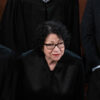President Barack Obama loves to talk about “teaching moments” (so much so that a member of his own party in Congress has criticized him for it.) The latest lesson the Obama Administration is trying to teach? That its overregulation isn’t costly or unusual, despite all evidence to the contrary. Today’s Wall Street Journal takes that assertion head on.
Here are three key takeaways:
1) The White House is picking and choosing numbers in order to understate its regulatory record.
The WSJ reports that, according to an analysis of the Federal Register by George Mason University’s Mercatus Center, “the Cabinet departments and agencies finalized 84 such regulations annually on average in President Obama’s first two years. The annual average under President Bush was 62 and under President Clinton 56.” The White House, in order to make the case that it isn’t an over-regulator, compares the last two years of the Bush Administration with the first two years of the Obama Administration. The WSJ explains why the comparison isn’t apples to apples:
Cass Sunstein, the director of the White House Office of Information and Regulatory Affairs, has been shopping around lower numbers that selectively compare Mr. Obama’s first two years favorably with Mr. Bush’s last two. Administrations are typically most active on the way out, and in any case the Bush regulatory record is nothing to crow about. But Mr. Sunstein’s numbers are even more misleading because they only include the rules that his office reviews while excluding the prolific “independent” agencies such as the Federal Communications Commission.
This means that if Congress tells, say, the Securities and Exchange Commission to write a new rule, it doesn’t enter Mr. Sunstein’s tally. So it omits, for example, some 259 rules mandated by the Dodd-Frank financial reregulation law along with its 188 other rule suggestions. It also presumes that Mr. Obama is a bystander with no influence over his own appointees who now dominate the likes of the National Labor Relations Board.
2) Rulemaking under the Obama Administration is set to surge.
While the rules the Obama Administration has already promulgated ought to be counted toward their total, future rules and the regulatory pace going forward must be considered, as well. And a government document known as the “Unified Agenda” reveals that a boatload of regulations are on the horizon. From the WSJ:
The current number of major new rules is 149, which is an historic high. Regulation started to grow in the aftermath of 9/11, and even more with the Pelosi Congress in 2007. Yet both the rule-making rate and number are surging to even higher levels under Mr. Obama
3) The costs of Obama’s regulations are much higher than White House estimates.
When you want to know how much regulations cost, there are the government’s estimates, and then there is reality. The White House estimates the total costs of its first two years of regulation at between $8 billion and $16.5 billion. The Heritage Foundation, though, estimates the total cost at $40 billion, compared to $60 billion over the life of the Bush Administration. The WSJ explains the discrepancy:
One problem with all such estimates is that they are based on self-reporting by government. Some agencies like the EPA have a habit of exaggerating benefits and hiding costs, but more importantly its analysis is done before the rules take effect in the real world. Often the true cost of regulation isn’t merely compliance but slower growth that diminishes consumer welfare by allocating capital and labor to less valuable or productive uses.
Read more about the growth of federal government regulations in Heritage’s special report, “Red Tape Rising: A 2011 Mid-Year Report.”




























